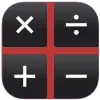Take a look inside 5 images
RealCalc Scientific Calculator
Pros: Having a scientific calculator right on a student's Android device is convenient and affordable (free!).
Cons: As with any scientific calculator, there's a learning curve to be able to use it properly.
Bottom Line: RealCalc is a handy, affordable scientific calculator for students and adults.
Classrooms already equipped with Android devices can save the hassle of keeping up with scientific calculators and the expense of separate purchases and use RealCalc. At no cost, it's a fantastic bargain, as is the very reasonable paid version, RealCalc+ -- which is needed if students work with fractions, for example.
RealCalc is a fully featured scientific calculator app that can serve as a replacement for a stand-alone scientific calculator for many kids. Features include traditional algebraic or RPN operations, unit conversions, percentages, various display modes, trig functions in degrees, radians, or grads, and more. The paid upgrade adds features including fractions, degrees/minutes/seconds, and customizable unit conversions and constants. A calculator help section gives written instructions on how to use each of the 10 modes, and the calculator holds a results history in its memory.
The settings menu allows students to customize a few specifics to make their calculation entries more efficient based on their preferences (like swapping the % and 1/x functions or using a long click instead of the shift key). The help function, which explains how to use each operation of the calculator, is especially helpful when students need a reminder of how to use the tool properly.
RealCalc is a real scientific calculator, just like the name states, and students will find it useful in advanced math and science courses. It can be a good substitute for kids to use in place of a stand-alone scientific calculator, as it has all the same features. Kids can use it on the go instead of carrying around a bulky calculator, and it's as easy to use as the real deal.
Its usefulness also hinges upon whether kids already know how to use a scientific calculator; they may want to practice a bit on the real thing at first.











